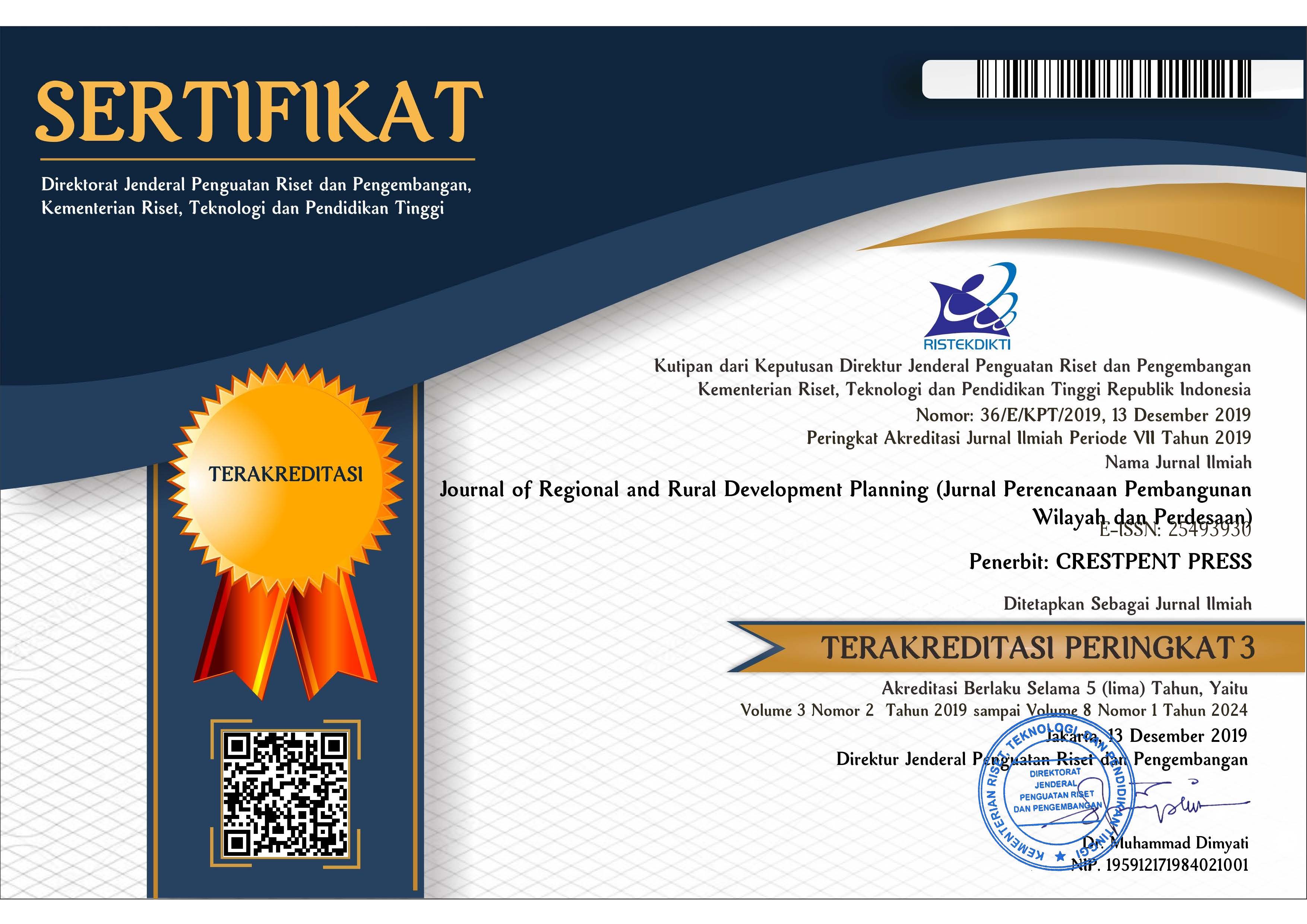Vol. 4 No. 3 (2020): Journal of Regional and Rural Development Planning (Jurnal Perencanaan Pembangunan Wilayah dan Perdesaan)
Tourism Development, Economy, and Rural Community Vulnerability Challenges
In 2006, Organization for Economic Cooperation and Development (OECD) published the New Rural Paradigm, which stated the importance of development of non-agricultural sectors in rural areas. Learning from experiences of industrially advanced OECD countries particularly in Europe, rural areas have been losing their growth potential because of lack of attention on non agricultural sectors. In fact, even rural areas are possible to become regional growth centers outside urban areas. Ten years later in 2016, OECD published its thought concerning a new paradigm on rural development particularly for developing countries, titled “A New Rural Development Paradigm for the 21st Century - A Toolkit for Developing Countries”. The concept of rural development offered in the publication has similarity with the publication ten years before, where non agricultural sectors could be the key in 21st century rural advancement. Despite so, especially in developing countries, the agricultural sector remains very important.
In line with OECD’s thoughts, rural areas in Bali and Java have arise and placed tourism and creative economy sector as their development backbone. In this edition, 3 from 5 articles discuss the role of tourism and creative economy sector in rural areas. As in OECD (2016), especially for developing countries, besides non agricultural potentials, agricultural commodities including food crop commodities remain as leading commodities in many rural areas. One way to advance the sector is through the development of information system for food crops by using Geographical Information System (GIS). In this edition, Jauhari’s study in Pacitan Regency, East Java Province, identified food crop leading commodities and map the production area. From the analysis, it was found that leading food crop commodities in Pacitan Regency are cassava, corn, and rice. There are two clusters of leading food crop commodity development in Pacitan Regency: in the Northeast and Northwest. Northeast around Bandar District, is the center production of cassava, corn, and rice. Meanwhile, Northwest around Punung District, is the location of rice production. This research is expected to contribute to policy formulation to determine leading food crop commodities and developing agropolitan area in Pacitan Regency.
Full Preface - Tourism Development, Economy, and Rural Community Vulnerability Challenges




.png)














